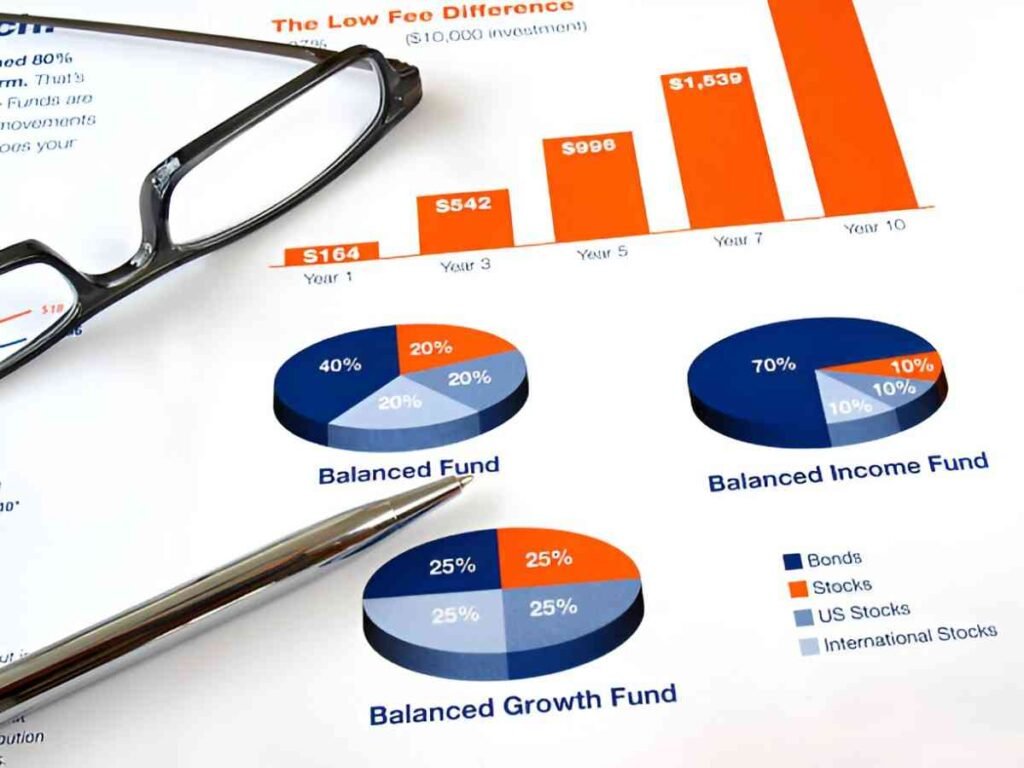Asset allocation forms the backbone of sound financial planning. It determines how I spread my investments across stocks, bonds, real estate, and other assets to balance risk and reward. Over a lifetime, my allocation must adapt—responding to market shifts, personal goals, and changing risk tolerance. In this guide, I explore the principles of asset allocation, the math behind optimal portfolios, and practical strategies for every life stage.
Table of Contents
Why Asset Allocation Matters
The foundation of long-term investing rests on diversification. Nobel laureate Harry Markowitz proved that a well-structured portfolio minimizes risk without sacrificing returns. His Modern Portfolio Theory (MPT) shows that combining uncorrelated assets smooths volatility. The expected return E(R_p) of a portfolio with two assets is:
E(R_p) = w_1 \times E(R_1) + w_2 \times E(R_2)Where:
- w_1, w_2 = weights of assets 1 and 2
- E(R_1), E(R_2) = expected returns
The portfolio risk \sigma_p is:
\sigma_p = \sqrt{w_1^2 \sigma_1^2 + w_2^2 \sigma_2^2 + 2w_1w_2 \sigma_1 \sigma_2 \rho_{1,2}}Here, \rho_{1,2} is the correlation coefficient. If \rho_{1,2} = -1, risk drops sharply.
Historical Performance of Asset Classes
| Asset Class | Avg. Annual Return (1928-2023) | Volatility (Std. Dev.) |
|---|---|---|
| US Stocks | 10.2% | 18.5% |
| US Bonds | 5.1% | 6.8% |
| Real Estate | 8.7% | 12.3% |
| Gold | 4.9% | 15.0% |
Stocks outperform over time but with higher volatility. Bonds stabilize portfolios but lag in growth.
Lifecycle-Based Asset Allocation
My allocation shifts as I age. Early on, I take more risk for growth. Later, I prioritize capital preservation.
The 100 Minus Age Rule
A traditional heuristic suggests:
\text{Stock Allocation} = 100 - \text{Age}At 30, I’d hold 70% stocks. At 60, 40%. But this oversimplifies. Lifespan, health, and goals matter.
A More Refined Approach
I prefer a glide path that adjusts based on:
- Risk Capacity: How much loss I can bear without derailing goals.
- Risk Tolerance: My emotional comfort with volatility.
- Time Horizon: Years until I need the funds.
Example: A 35-Year-Old’s Portfolio
Assume I earn $100,000 yearly, save 15%, and plan to retire at 65.
| Asset Class | Allocation | Rationale |
|---|---|---|
| US Stocks | 60% | Growth |
| International Stocks | 20% | Diversification |
| Bonds | 15% | Stability |
| REITs | 5% | Inflation hedge |
Tax Efficiency and Asset Location
Where I hold assets matters as much as allocation. Tax-advantaged accounts (401(k), IRA) shield bonds and REITs from high taxes. Stocks thrive in taxable accounts due to lower capital gains rates.
Asset Location Strategy
| Account Type | Ideal Assets | Why? |
|---|---|---|
| 401(k)/IRA | Bonds, REITs | Tax-deferred growth |
| Roth IRA | High-growth stocks | Tax-free withdrawals |
| Taxable Brokerage | Stocks, ETFs | Favorable capital gains rates |
Rebalancing: The Unsung Hero
Markets drift my portfolio off target. Rebalancing restores the original mix. I do this annually or when allocations deviate by 5%.
Rebalancing Example
Initial allocation: 60% stocks, 40% bonds. After a bull market, stocks rise to 70%. I sell 10% stocks and buy bonds.
\text{New Stock Weight} = \frac{\text{Stock Value}}{\text{Total Portfolio}} = 70\%To rebalance:
\text{Sell Stocks} = 70\% - 60\% = 10\%Behavioral Pitfalls to Avoid
- Performance Chasing: Buying hot stocks after they rise.
- Panic Selling: Dumping assets in downturns.
- Overconfidence: Taking excessive risk after wins.
Final Thoughts
Asset allocation isn’t static. I adjust it as life evolves—marriage, kids, career shifts. The math guides me, but discipline keeps me on track. By blending theory with personal needs, I build a portfolio that lasts a lifetime.




